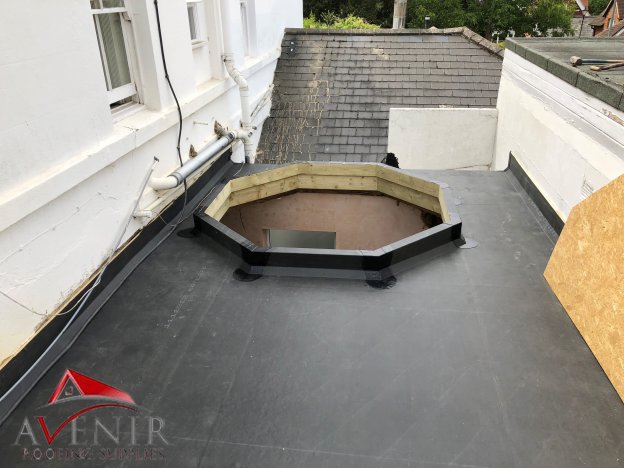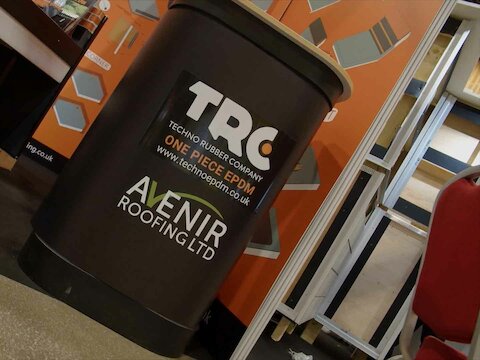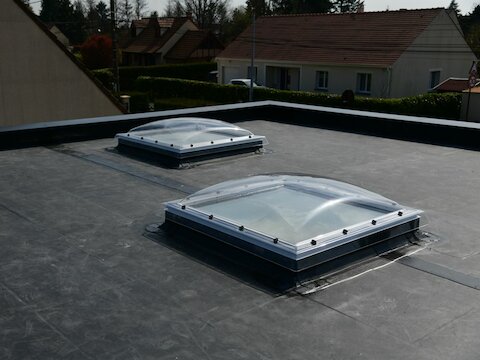The Beginner’s Guide to Flat Roofing

Flat roofing has been around for thousands of years, but it has evolved so much in that time. You can see it on so many roofs across the country, which makes it surprising that many people don’t really understand what it is. It’s important to thoroughly research a new roofing option before you choose it for your property, as it’ll be a decision that affects the safety, value and overall appearance of your home or business. In that regard, we’ve created this beginner’s guide to ensure that you’re aware of just how useful it really is.
What is Flat Roofing?
A flat roof is almost what it says on the tin. We write almost because it’s not completely flat, as there needs to be a slight incline to allow for the drainage of rainwater. According to the Designing Buildings Wiki, flat roofs first became popular in the UK after the Second World War, as they were seen as a cheaper alternative to pitched roofing. This was the traditional option at the time, while flat roofing was seen as an option that was only suitable for warmer climates.
However, that assumption soon changed. As well as being cost-effective, flat roofing was found to be long lasting if made from the right materials. Its low maintenance requirements made it extremely popular, while it’s minimalistic design gave it appeal. It soon spread across the UK, becoming common on extensions and garages in residential areas.
What Are Its Uses?
Commonly used for additions to an existing building, flat roofs are a cheaper alternative to the traditional pitched roof. Commercial premises, such as warehouses and storage facilities, tend to use them as well due to their space-saving properties, while they’re also in use on residential properties too.
They also have a myriad of other uses, especially with the rise of sustainable roofing. Rooftop gardens are that much more achievable when you have a flat roof installed, as you can plant a variety of herbs and shrubbery that suits the UK’s climate. You can also install solar panels if you’re looking to decrease your energy wastage, while seating areas can also work in the summer months.
What Materials Are Used?
A variety of materials can be used to install flat roofing, but there’s one that stands out from the crowd. Firestone EPDM is incredibly reliable, as it’s installed on residential and commercial properties on a worldwide basis. From office buildings to verandas, Firestone EPDM is an essential tool in every roofer’s arsenal, with many praising its flame-free application and extremely high life expectancy of up to 50 years.
Due to the versatility of this material, each roof requires little-to-no maintenance either, and the installation process is quick and efficient. In fact, we run regular training courses to get the most out of Firestone EPDM, and we’re happy to discuss these in detail.
What Are The Benefits?
The most immediate benefit of flat roofing is its cost-effectiveness, but there’s so much more to it. The design of a flat roof provides it with several advantages. Firstly, it’s usable on all kinds of structures, including larger buildings like airports. Due to the layout of the roof, there also tends to be a larger amount of usable space inside too, which allows for increased storage or living space.
It’s also a lot easier to maintain, and roofing inspections are easier to carry out due to the flat surface. This enhances its cost-effectiveness, which is further bolstered by the comparative cheapness of flat roofing compared to other roofing types. As a result, you receive a cheaper roofing option that’s easy to maintain. It’s also stylish in a minimalistic sense too!
Are There Any Disadvantages?
Lack of drainage is the main concern during the installation of flat roofing. While the roof isn’t technically completely flat, they don’t traditionally drain as efficiently as a pitched roof. However, Firestone EPDM goes some way to solving this issue. Tests carried out at Eurofins, an accredited laboratory, have shown that the material allows for the recovery of rainwater, which you can then recycle!
Many people also criticise the limited number of materials that are available in the construction of the material, and the lifespan of those materials. However, Firestone EPDM has a lifespan of up to 50 years, making it a great choice for all flat roofers out there.
How Can Avenir Help?
With more than 30 years of experience in the trade, we’re here to enhance your roofing expertise. From our thorough training courses to our Firestone EPDM, we have everything you need to kickstart your journey in the roofing trade. We also provide Rubbatrim too, which is available in several colours, tolerances and finishes. If you have any questions about flat roofing, or if you want to enquire about our other services, just contact our team.




